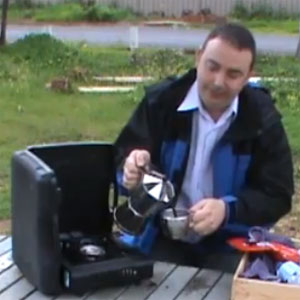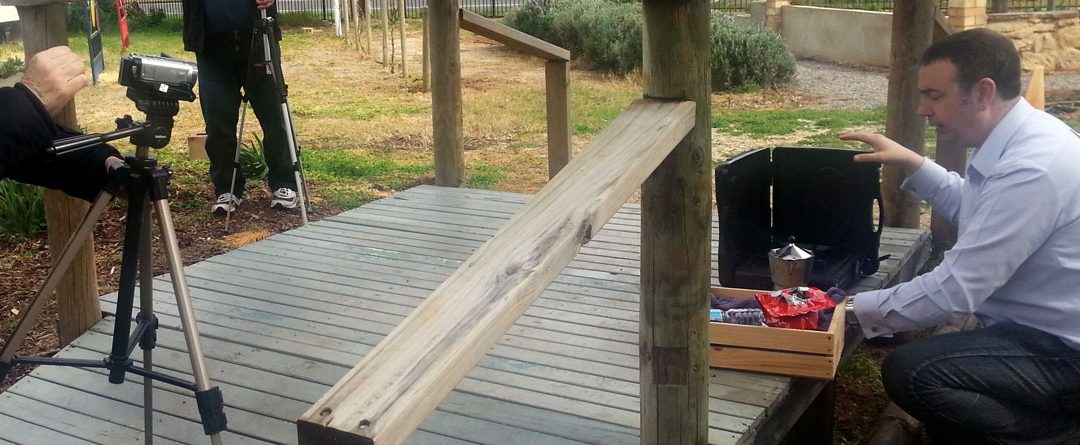
Steve Davis making espresso on the side of the road – a simple kit but it makes a world of difference to your travel
Have you ever travelled to a new suburb or had to stop in a country town and struggled to find a good cafe?
Although the spread of good cafes is growing slowly within Australia, there are still large, large shadows on the maps.
In my day job, I travel around Australia running marketing workshops for business people and organisations, so I have first hand experience of just how rare good cafes can be.
That’s why I’ve made a video on how to make good espresso on the road.
I suppose I should define what makes a ‘good cafe’ in my opinion and then give you your checklist.
What makes a cafe a good cafe?
In my opinion, a good cafe is one that can provide me with a superb shot of espresso.
I don’t care for sugar or milk in my coffee, so I only judge cafes on the quality of their short blacks.
This means I often ignore decor, food items and service.
If the espresso is perfect, almost all sins can be forgiven!
A perfect espresso contains these elements:
- nice, pleasant flavour, naturally bittersweet and possibly a roasted influence
- moderate to thick body
- a crowning crema, caramel-coloured
- beautiful aroma
- an aftertaste that lingers for 20-30 minutes
- a small shot in volume, 3-4 sips worth
The trouble is, many cafes blunder in espresso territory by
- scalding the coffee
- filling the cup to the brim
- using a stale, sour blend
The list goes on and will probably make a good article later.
What you need to make a good espresso on the road
There are compromises to accept when you are away from your home or office coffee maker or your favourite cafe. Namely, they include not getting your espresso as YOU like it or finding alternative coffee brewing methods which are never as good as a commercial espresso machine in the hands of an expert and passionate barista.
So, when I am on the road, my main compromise is to forego my beloved, pump-espressed coffee in favour of a steam-espressed coffee, by using a stovetop espresso maker heated by gas.
This can make good coffee, just not perfect coffee because, in my humble opinion, nothing beats the alchemy of espressing water and coffee grounds together under measured, mechanical pressure. You do need a solid force to merge water and oil, after all.
So here is my checklist:
- Wooden crate insulated by old towel (this works for me because these items can deal with hot utensils resting in them after the coffee stop, and are not going to melt or ignite!)
- Stainless steel stovetop espresso maker (stainless steel beats aluminum ones hands down – choose a cup size that meets your needs, 2, 4, 8, 12)
- Stainless steel cup (this works for me because it is insulated and unbreakable but you could choose one of those plastic/rubber travelling mugs with a lid – when I experimented with that I discovered that each cup of Baristador coffee lasts 150km)
- Spoon or measure (this is for adding AND tamping the coffee grounds into the coffee holder)
- Water
- Portable gas burner with spare bottle
- A picnic bench on the side of a road, preferably shielded from strong winds
And now, for the video. I hope it gives you some tips or at least encourages you to try. Please share your adventures or experiences in the comments.
httpv://www.youtube.com/watch?v=FZpQlQirH5M


Trackbacks/Pingbacks